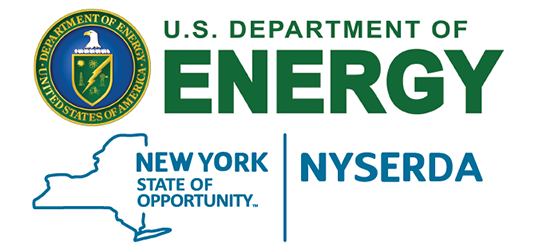What will be in the SEIS for the West Valley Site?
The U.S. Department of Energy (DOE) and New York State Energy Research and Development Authority (NYSERDA) are jointly preparing the Supplemental Environmental Impact Statement for Decommissioning and/or Long-Term Stewardship at the West Valley Demonstration Project and Western New York Nuclear Service Center (DOE/EIS-0226-S1) (SEIS for the West Valley Site). The SEIS will address the completion of the decommissioning of the West Valley Demonstration Project (WVDP) and the decommissioning and/or long-term management or stewardship of the Western New York Nuclear Service Center (WNYNSC) and State-Licensed Disposal Area (SDA).
Summary
DOE and NYSERDA are jointly preparing an SEIS for the West Valley Site. The West Valley Site includes the DOE WVDP, the WNYNSC, and the SDA. In 2010, DOE and NYSERDA decided to implement the Phased Decisionmaking Alternative, which was the preferred alternative in the Final Environmental Impact Statement for Decommissioning and/or Long-Term Stewardship at the West Valley Demonstration Project and Western New York Nuclear Service Center (DOE/EIS-0226). During implementation of Phase 1, a number of highly contaminated facilities at the West Valley Site are being removed. DOE and NYSERDA intend to make Phase 2 decisions on the disposition of the facilities and areas remaining after completion of Phase 1 decommissioning. The remaining facilities include the Waste Tank Farm, U.S. Nuclear Regulatory Commission (NRC)-Licensed Disposal Area, non-source area of the North Plateau Groundwater Plume, Construction and Demolition Debris Landfill, Cesium Prong, contaminated stream sediments, balance of the WNYNSC property, and SDA.
The U.S. Environmental Protection Agency, NRC, and New York State Department of Environmental Conservation (NYSDEC) are participating as cooperating agencies under the National Environmental Policy Act. The New York State Department of Health and NYSDEC are participating as involved agencies under the New York State Environmental Quality Review Act.
What will be Analyzed in the SEIS?
The SEIS for the West Valley Site will evaluate several alternatives, including a No Action Alternative, Sitewide Close-in-Place, Sitewide Removal, and hybrid alternatives that could contain elements of any or all of the other alternatives. DOE and NYSERDA plan to identify a preferred alternative in the Draft SEIS.
What Potential Environmental Issues and Potentially Significant Adverse Impacts Will Be Evaluated in the SEIS?
DOE and NYSERDA have tentatively identified the following potential environmental issues and potentially significant adverse impacts that will be analyzed in the SEIS. The list is presented to facilitate early comment on the scope of the SEIS. It is not intended to be all-inclusive nor to predetermine the alternatives to be analyzed or their potential impacts.
Potential Environmental Issues for Analysis
- Issues associated with long-term site stewardship, including duration and costs of stewardship, regulatory and engineering considerations, institutional controls, and land use restrictions, including the need for buffer areas.
- Ability of alternatives to satisfy the NRC License Termination Rule decommissioning criteria for the WVDP.
- Ability of alternatives to meet the Comprehensive Environmental Response, Compensation and Liability Act risk range.
- Compliance with applicable Federal, state, and local requirements.
- Identification of Derived Concentration Guideline Limits and other relevant clean-up concentrations, where appropriate.
- The influence of, and potential interactions of, any wastes remaining at the West Valley Site after decommissioning.
- Long-term site stability, including seismicity and erosion, based upon available data on the likelihood of future weather events.
- Issues associated with Waste Incidental to Reprocessing.
- Irretrievable and irreversible commitment of resources.
Potentially Significant Adverse Impacts
- Impacts to the general population and onsite workers from radiological and non-radiological releases from decommissioning and/or long-term stewardship activities. Transportation impacts from shipments of radioactive, hazardous, mixed, and clean waste generated during decommissioning activities.
- Impacts to the general population and onsite workers from radiological and non-radiological releases at radiological and non-radiological waste disposal sites receiving waste generated during site decommissioning and/or long-term stewardship activities.
- Impacts from postulated accidents.
- Disproportionately high and adverse effects on low-income and minority populations (environmental justice).
- Socioeconomic impacts to local communities.
- Areas of concern to the Seneca Nation of Indians related to culturally-specific considerations.
- Short-term and long-term land use impacts.
- Short-term and long-term environmental impacts, including air and water quality, from decommissioning and/or long-term stewardship activities.
- Impacts to floodplains and wetlands (the SEIS will contain an assessment of potential floodplain and wetland impacts in accordance with DOE requirements (Title 10 of the Code of Federal Regulations (CFR) Part 1022)).
- Impacts to groundwater quality.
- Impacts on threatened and endangered species.
